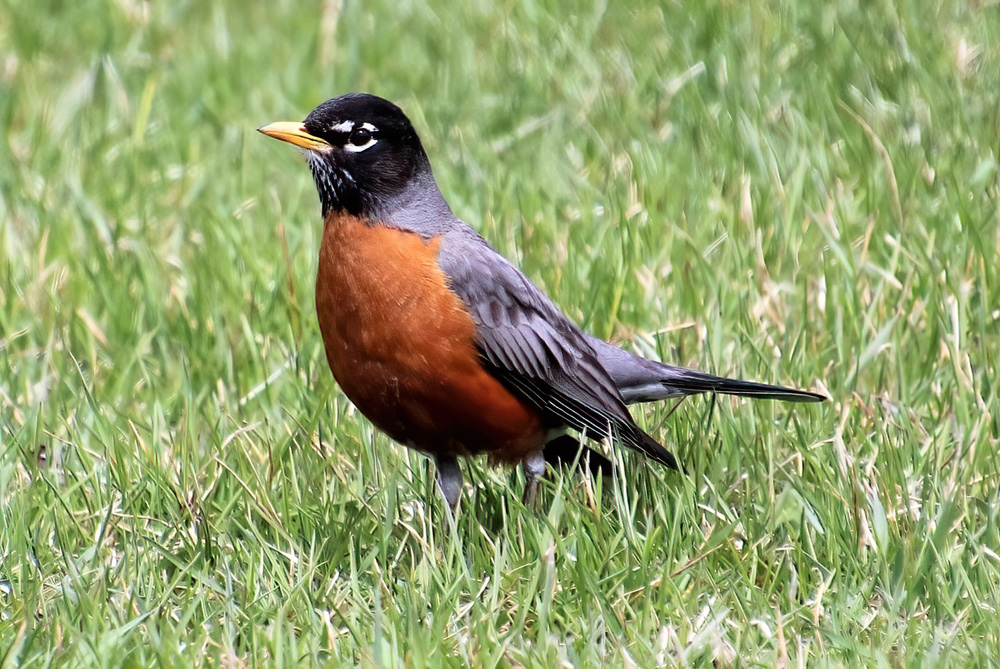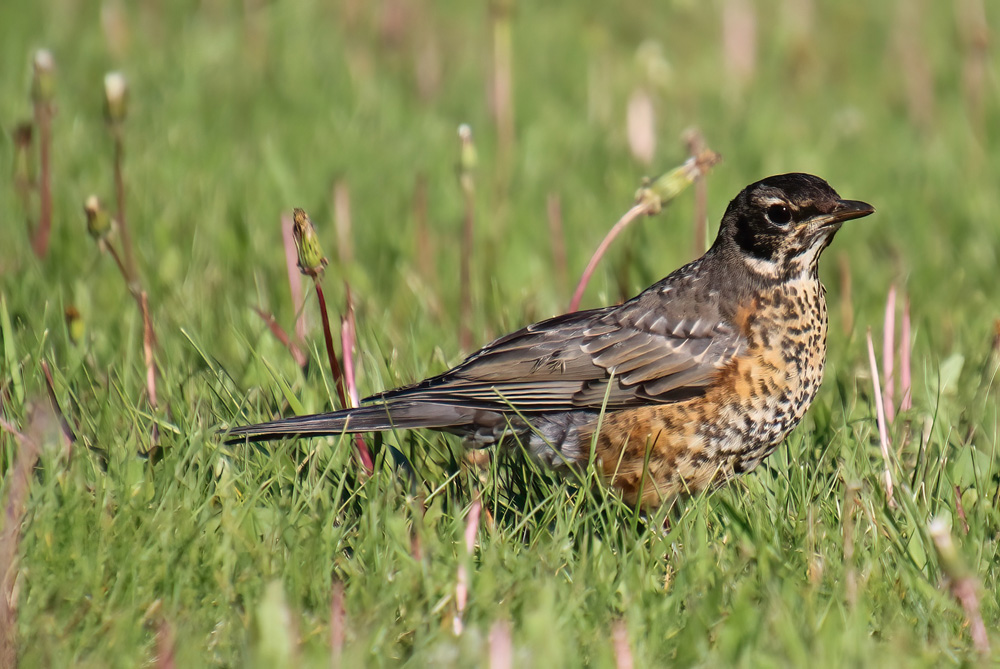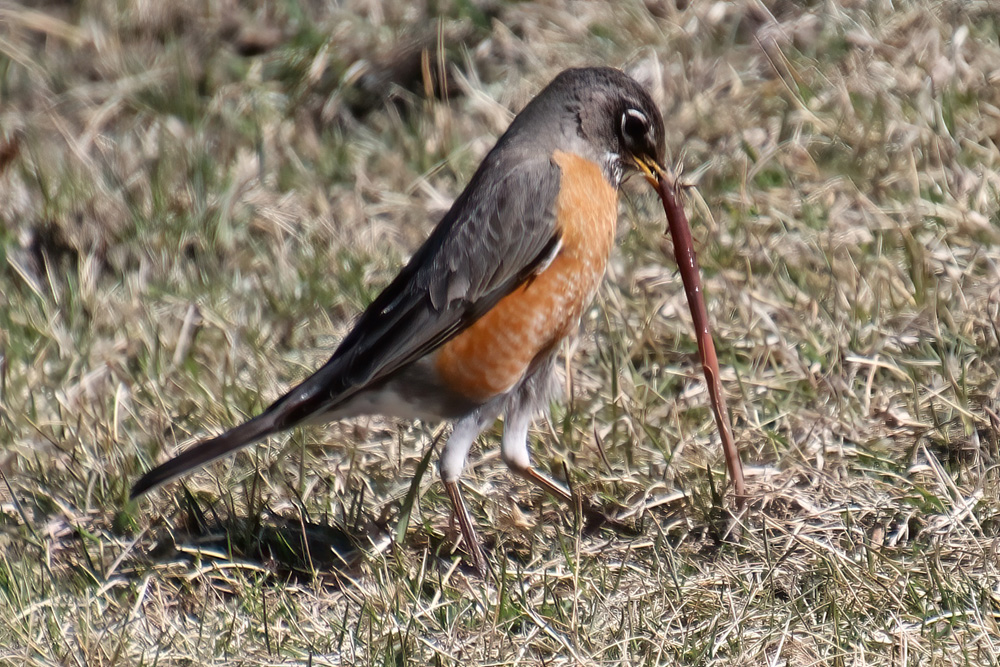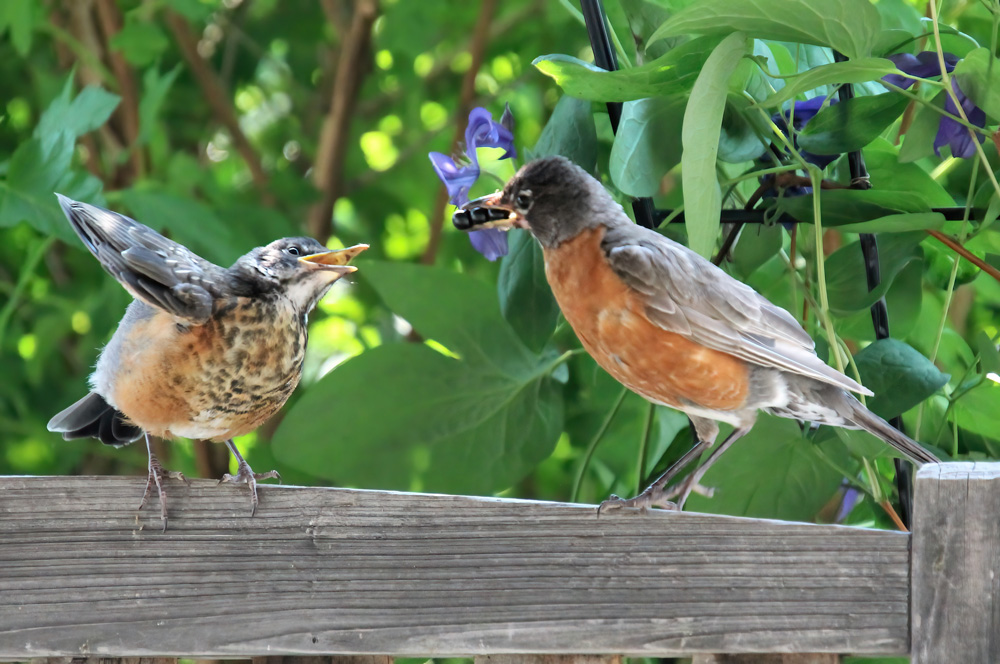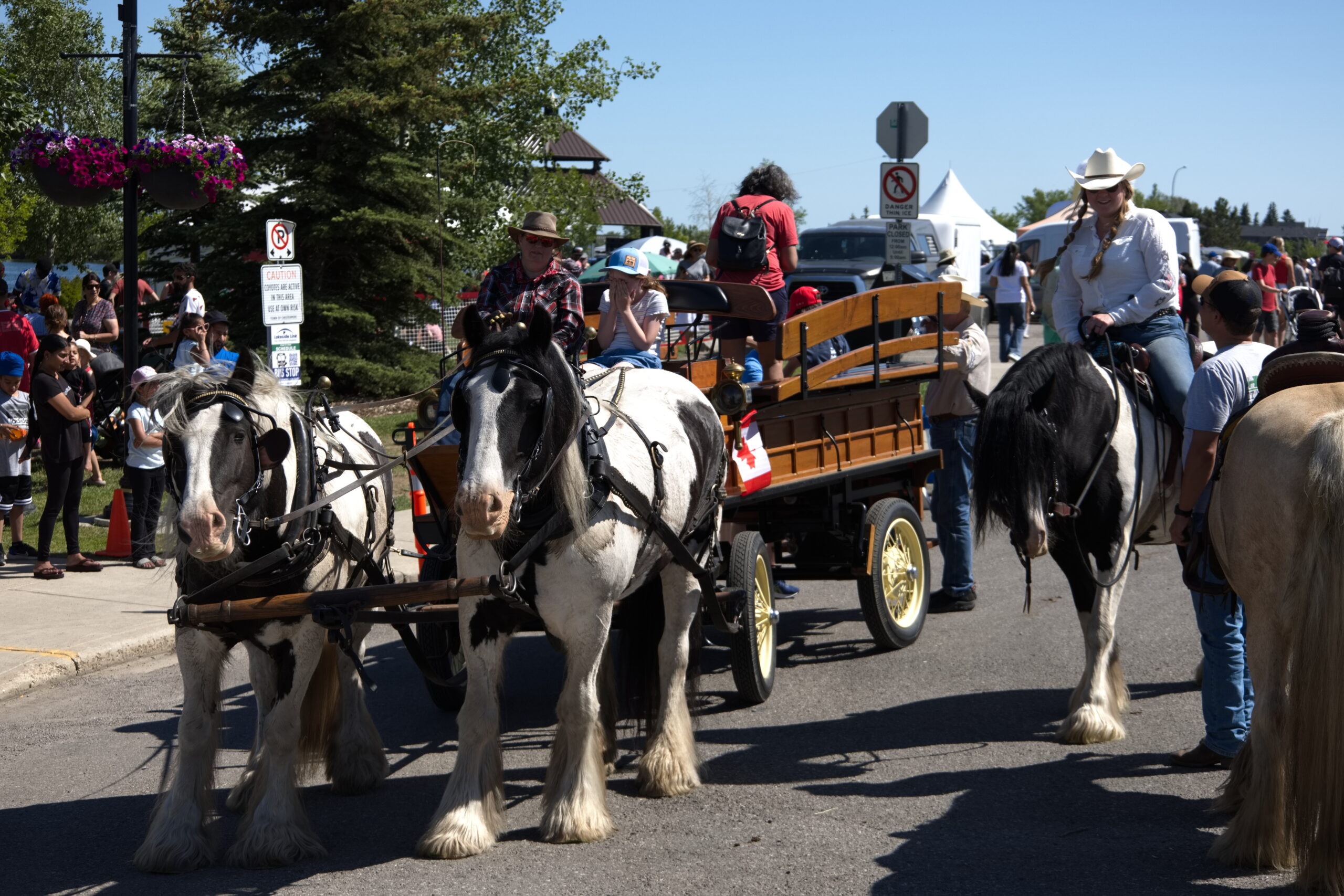From our first days as young children to these days of aging and reflection, one bird has fortunately been an annual reminder of the changing of the seasons. When the first one of the spring is seen, a smile forms and an understanding that the cycle of life is about to leap with positive energy enters our thoughts. Behold! ‘Turdus migratorius’ has arrived. Or should I say, the American Robin is here at last!
Male robins often return first, staking out potential nesting territories. Their head and tail plumage is quite black in hue, while the robin’s red-orange breast is radiant. Females can be identified in spring by their less brilliant color array. The robin’s favorite food, the earthworm, provides excellent protein for both adults and fledglings. Watching a robin hunt in the yard, with its head slightly cocked, hopping a bit, then running a few steps and suddenly nabbing a protein-rich worm, a grub or some other unlucky insect, summarizes the natural cycle of survival.
The wonderful song shared with us by the robin, consists of a series of rich, caroling notes that rise and fall in pitch. “Cheer up, cheerily, cheer up, cheerily”, can be heard usually at dawn during the spring and summer months. Remarkable in reproduction, the robin can raise up to 3 broods in a summer, with each brood consisting of an average of 4 robin-blue eggs. The male helps out in the feeding of the young and defends the nest. He will also tend to a brood when the female is attempting to produce a second batch of fledglings. Despite the numerous broods a robin can have, normally only 25 per cent of the fledglings make it into November.
Once the leaves are starting to change in the fall, American Robins begin to form large flocks, preparing for their migration into southern Alberta, southern British Columbia and of course, into the United States. As the seasons change, the diet of the robin changes to that of berries, both wild and from our cultivated fruit shrubs. Honeysuckle berries are a favorite target of robins. As the ground begins to freeze, earthworms of course descend below the frost line and the robin’s favorite meal disappears, forcing a change in diet and the need to migrate. Interestingly, robins do at times overwinter in central Alberta, spending time roosting in trees and staying close to nearby berry patches. Hence local conditions determine in part, how far robins may migrate.
As you see the arrival of ‘turdus migratorius’ over the coming weeks, you will most certainly be comforted by their presence. Yet you may wonder how such a beautiful, early arriving bird is named so unusually in Latin. To add further comfort, ‘turdus migratorious’ simply means a thrush that travels or goes! And our appreciation and love of the American Robin red-breast grows!



